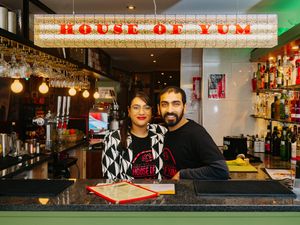Telford named as black spot for independent retailers
Bosses at Telford Shopping Centre have defended their record for working with independent retailers after a report once again identified the town as a national black spot.
The unusual make-up of Telford, with its major shopping centre and retail parks comprising the biggest part of its town centre, means that only 15.5 per cent of businesses are independent retailers – the lowest proportion in the country.
The Local Data Company which compiled the figures showed that nationally independent retailers were on the rise, but highlighted the shortage in Telford town centre.
But bosses at the shopping centre defended their record, saying the figures overlook the independent retailers operating from temporary pitches in the town centre.
Centre manager Glynn Morrow said: “We are very supportive of all of our independent retailers and we are proud that a number have traded very successfully with us for many years.
“We also have our own independent initiative managed by Asset Management CIC, an organisation that leases Brodie House, adjacent to the shopping centre, offering accommodation to small business and start-up ventures.
He added: “This particular report is based on shop units, what it doesn't pick up is the huge number of independent retailers that we have in the centre operating from retail merchandising units and temporary pitches.
“The demand for space is driven by retailers and whilst we welcome independent retail stores such as Victoria James among others, clearly Telford is the destination of choice for larger high street brands such as Debenhams, House of Fraser and Zara to name a few.”
Telford & Wrekin as a whole is not short of independents, and the report showed that 63 per cent of store in Wellington are independent – that equates to 119 independent retailers.
Neighbouring Shrewsbury also performs well, with 404 independent stores comprising 66 per cent of the town centre total. Ellesmere performed particularly well, as 89.2 per cent of its shops are independent.
Data from the Local Data Company and the British Independent Retailers Association shows that traditional independent shops opened significantly more shops in the first half of 2017 than in the same period last year, whilst national chains with more than five stores nationally continued to see a fall.
Nationally the number of independent shops on high streets increased by 762 in the first half, up from just four last year. That was driven by a large increase in the availability of shop units.
LDC director Matthew Hopkinson said: “The first half of 2017 has seen remarkable growth in the opening of independent shops and food and beverage outlets across Great Britain. This is significant in what is a challenging environment and where many chain retailers are closing stores.
"History, however, tells us that independents also have the propensity to change rapidly from growth to decline due to the marginal nature of some businesses, shorter lease lengths and wider impacts of changes to the costs funding. For now, it is a good news story and one that we should celebrate and support.”



